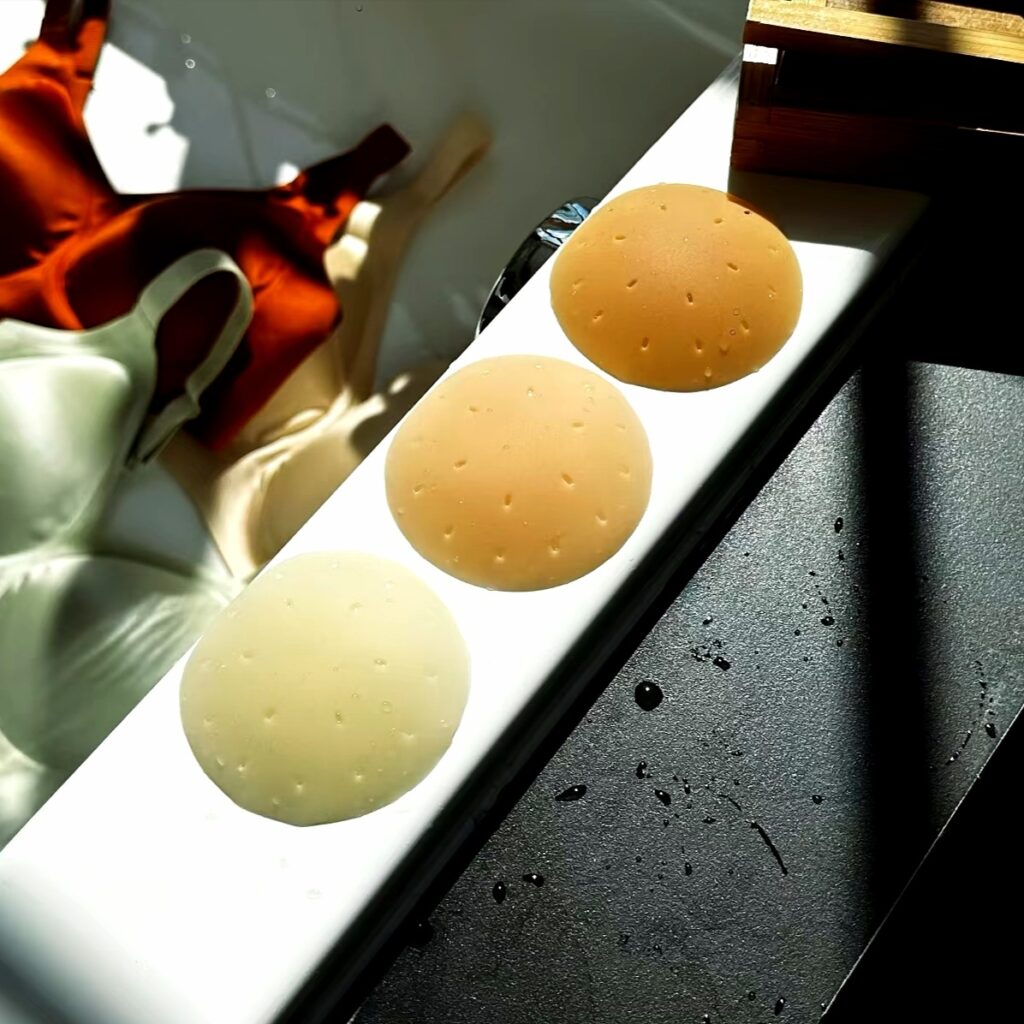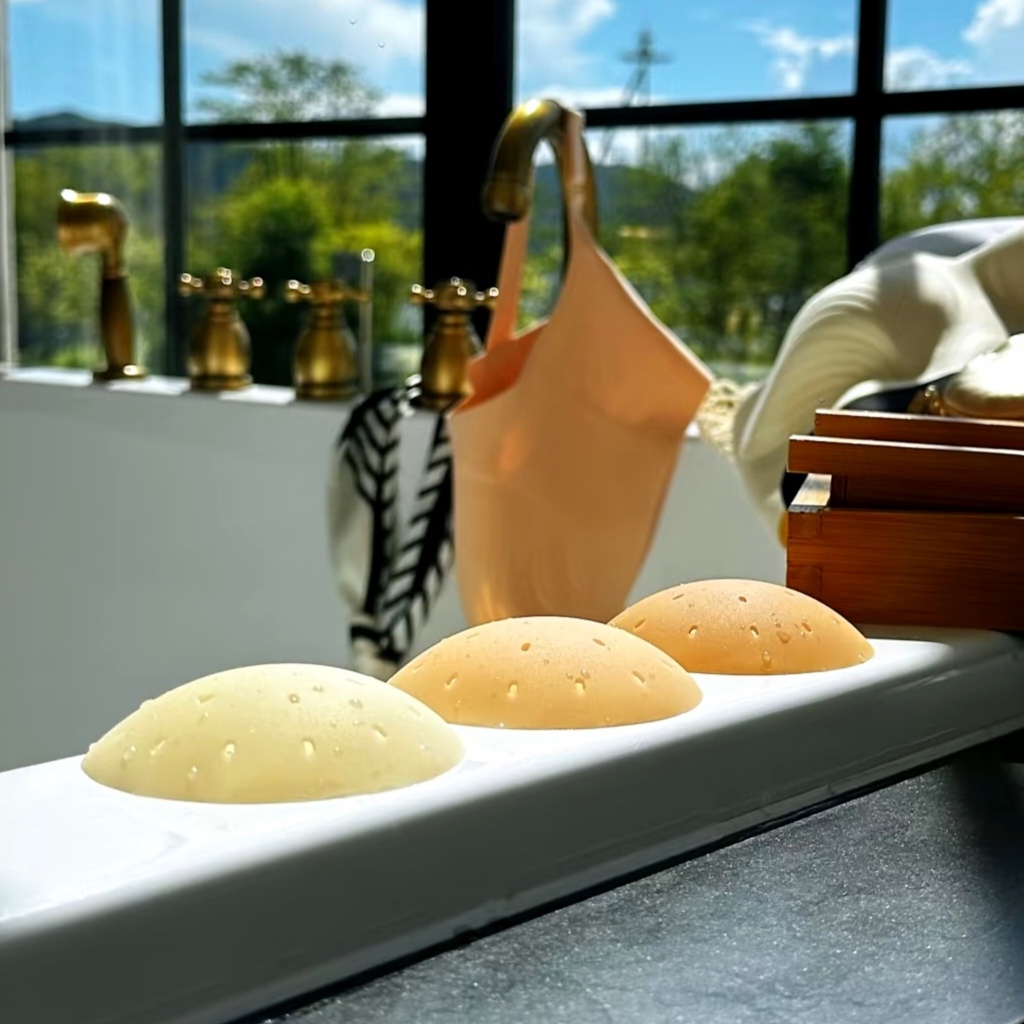I’ve had those moments when you need your nipple covers to stay invisible, and they start slipping or falling off. Super embarrassing, right? Even reusable nipple covers can become “semi-sticky” after a few wears, and tossing them feels like such a waste. The good news is, there are simple ways to make nipple covers sticky again, and I’ve tried plenty of tricks—rinsing with water, using a hair dryer, even smearing on hand cream (don’t try this—it actually ruins them!)
Then I realized restoring their stickiness doesn’t have to be complicated. I’ve brought more than one pair back to life with a simple home trick, and I’ll show you exactly how below.
How long can nipple covers be reused before they stop sticking?
First, let’s clarify what reusable nipple covers really are. Unlike disposable paper or fabric pasties, they’re typically made from medical-grade silicone that feels soft and flexible. The inside layer has a self-adhesive silicone surface, which is why they stick so securely. With the right care, you can even make nipple covers sticky again after multiple wears. Thanks to this durable material, a good pair can be reused many times.
So how long do they actually last? From my experience, high-quality sticky nipple covers, when properly maintained, usually last anywhere from 10 to 30 uses. The difference depends mainly on three factors:
- The quality of the nipple covers themselves: Higher-priced products from reputable brands often use more durable silicone and adhesives.
- Your usage frequency and sweat levels: Do you wear them daily for extended periods, or just occasionally for special occasions? Sweat, oils, and skincare products accelerate wear on the adhesive layer.
- Most crucially: Your maintenance routine! Proper cleaning and storage are key to extending their lifespan.
How to Make Nipple Covers Sticky Again
Preparation is Key
- Clean hands: Avoid bringing bacteria and grease onto the patch.
- Localised testing: Before any cleaning or application operation, test the patch on a small edge area to ensure that it will not damage the silicone material.
- Thorough drying: After any method, the patch must be allowed to dry completely and naturally; otherwise, the adhesion will not be restored at all.
7 Safe Ways to Make Your Nipple Covers Stick Again
1. Gentle Basic Cleaning (Safest & Recommended)
This is the most common and safest way to make nipple covers sticky again, since silicone nipple covers usually lose their grip due to skin oils, sweat, skincare products, or dust.
Steps:
- Gentle wash – Use lukewarm water (not hot) and a neutral, oil-free, non-moisturizing soap (like baby soap, mild hand soap, or a nipple cover–specific cleanser). Gently rub the sticky side.
- Rinse thoroughly – Run lukewarm water over the sticky side until all soap is gone and there’s no slippery residue left.
- Air dry – Place the nipple covers sticky side up on a clean towel or paper towel in a well-ventilated area. Do not rub with a towel, put them in direct sunlight, or use a hot blow dryer—heat can ruin the adhesive.
- Check results – Once fully dry, the stickiness should be mostly restored.
2. Use double-sided fashion tape (temporary emergency method)
- Directions: Cut a small strip of double-sided fashion tape specifically for clothing and stick it to the edge of the nipple covers where the adhesion needs to be strengthened (e.g., the top half circle). This will prevent the edges from buckling.
- Advantages: Very effective and safe for the skin.
- Note: Don’t stick it all over the nipple covers, or it will be difficult to remove.
3. A small amount of moisturizer or specialized enhancer (temporary emergency method)
- How to do it: Apply a very small amount of oil-free moisturizer or a special nipple covers adhesion enhancer to the skin of the breasts before applying the patch. Principle: A very thin layer of moisturizer can temporarily increase the adhesion of the nipple covers.
- Principle: A very thin layer of moisturizer can temporarily increase adhesion, but the amount used must be very small, or it will be counterproductive.
- Note: The effect of improper use can vary from person to person; always test with a small amount first.
4. Use silicone adhesive gel that is healthy and safe for the skin
Silicone adhesive gel is a product designed to help make nipple covers sticky again by creating a fresh, safe silicone layer on the surface. It’s especially useful if you want to extend the life of your reusable nipple covers and keep them working like new.
- First, make sure that the nipple covers are absolutely clean and completely dry.
- Next, shake the bottle of silicone adhesive gel to make it uniform.
- Then, take an appropriate amount of gel and apply it thinly and evenly to the side of the nipple covers that was originally sticky.
- Finally, place the coated sticky nipple covers on a clean plastic sheet or wrap (sticky side up) and allow them to dry naturally.
- This process usually takes between 30 minutes and 2 hours, depending on the temperature and humidity of the environment. Do not use a hair dryer or heater to speed up the drying process. High temperatures can damage the structure of the silicone gel.
- Drying is complete when the gel layer changes from a white emulsion to completely clear and dry to the touch.
- After drying, close the sticky sides of the nipple covers relative to each other, cover them with the original protective film, and store them flat in the box.
- The next time you use it, just take it out and stick it on.
- Key Tip: Apply only a thin layer, as a thicker layer will take longer to dry and may affect the adhesion. Make sure to cover the entire sticky side, especially the edges.
5. Use a spray that can make the nipple covers sticky again
Adhesive sprays work by forming a very thin adhesive film on the surface and are suitable for all types of nipple covers (both fabric and silicone), but are particularly suitable for fabric patches without a silicone layer. If you’re looking for a quick way to make nipple covers sticky again, adhesive sprays are a simple and practical option.
- First, make sure the nipple cover is completely clean and dry. This step is especially important for reusable nipple covers, since any residue can reduce the effectiveness of the spray.
- Next, shake the spray can to even out the contents.
- Then, place the sticky nipple covers (sticky side up) on newspaper or scrap paper in a well-ventilated space.
- Finally, keep the spray can about 15-20 centimeters away from the breast nipple covers and spray a thin, even layer. Don’t spray too much and too wet, as it may soak the breast nipple covers or take extra long to dry.
- After spraying, again, you need to let it dry naturally.
- Just wait for the spray liquid to evaporate completely and the surface to become slightly sticky to the touch. This usually takes about 10-30 minutes. Once completely dry, you can store them together or use them directly.
6. Use the baking soda powder method (safe and mild recommended)
- Directions: Provided the chest nipple covers are completely dry, very lightly sprinkle a thin layer of edible baking soda on the sticky surface, gently spread it evenly, and then shake or blow off the excess powder.
- Principle: Baking soda absorbs residual moisture and grease, providing extra grip.
- Note: This method is only a temporary solution. Make sure your skin is dry before wearing and still clean thoroughly afterward.
7. Diluted Alcohol Method
- Directions: If the results are still unsatisfactory after basic cleansing, try a gentle enhancement – the diluted alcohol method. Mix medical alcohol (isopropyl alcohol) with purified water in a 1:1 ratio. Dip a cotton pad into a small amount of the mixture and very gently wipe the sticky side to remove stubborn grease residue.
- Note: Alcohol may have a slight effect on some silicone materials, so be sure to test a small area first and move quickly, rinse off with water immediately after wiping, and then repeat the steps of the Basic Cleaning Method (rinse and air dry).
Important Notes & Tips
- Skin safety first: No matter what method you use to make nipple covers sticky again, always test the product on a small area of skin (like your inner arm) before applying. Wait a while to confirm there’s no redness, itching, or irritation before using it formally.
- Cleaning is the key: If your nipple covers aren’t thoroughly cleaned, no adhesive will work properly. Dirt, oils, or residue can mix with adhesive products and even become a breeding ground for bacteria. Keeping sticky nipple covers clean ensures both comfort and longevity.
- Avoid overuse: Adhesive gels and sprays can be reused many times (often 5–10 wears or more, depending on the product quality and the condition of your silicone nipple covers). Still, every product has a lifespan. If your covers are deformed, cracked, or have lost elasticity, even restored stickiness won’t fix the fit or comfort. That’s when it’s time to replace them with fresh reusable nipple covers.
- Choose wisely: Always buy from reputable brands to ensure the ingredients are safe, non-toxic, and made for direct skin contact.
- Proper storage: When not in use, cover your silicone nipple covers with the original protective film, press the sticky sides together, and store them flat. Avoid folding, heavy pressure, or exposing them to dust and hair, which can reduce adhesion.
❌ Things You Should Never Do
- Do not blow vigorously with hot water or a hair dryer: high temperatures can permanently damage the chemical structure of the silicone, rendering it completely ineffective.
- Do not clean with oil-based products: e.g., make-up remover, baby oil, etc. This will dissolve the silicone layer.
- Don’t brush with hard bristles or rough towels: this can scratch the delicate adhesive surface.
- Do not apply without cleaning: you must clean after each use; otherwise, residues will accumulate.
- Do not store the adhesive surfaces close to each other: they should be separated by the original plastic protective film or greaseproof paper.

How to Extend the Life of Sticky Nipple Covers?
Clean immediately after use
You need to clean the sticky nipple covers immediately after each use; do not let sweat and grease stay on top of the silicone nipple covers for a long time.
Proper Cleaning
Always use mild detergent and cold or lukewarm water to clean silicone nipple covers properly.
Dry completely
Always air dry naturally to keep your silicone nipple covers dry.
Store properly
After cleaning and drying the adhesive nipple covers, stick them with the original package protection film, store them flat in a cool and dry place, avoid heavy pressure, and store them properly.
How long can reusable nipple covers be used before it’s time to toss them?
Remember this principle: “Stickiness can be restored, but form cannot be undone.”
Even if you’ve temporarily made your nipple covers sticky again using simple tips like washing with a gentle cleanser, rinsing with water, and letting them air dry, don’t hesitate to replace them if any of the following issues appear. For comfort and the best results, it’s time to switch to a new pair.
- Completely lose elasticity and completely deformed: the new nipple covers should be able to rebound well to fit your breast shape. If it becomes floppy and can’t maintain its original curvature and shape, like a piece of flattened Play-Doh, then its lifting and shaping function has failed, and it won’t look good on you.
- Edge or surface cracking, peeling: If you find that the edge of the silicone exhibits small cracks or the surface shows a phenomenon similar to “peeling”, it indicates that the silicone material itself has aged and degraded. Continued use is not only unattractive, but the cracked crevices are also more likely to harbor dirt and bacteria.
- Dry, brittle, or sticky material: Normal silicone should be moist, soft, and flexible. If it feels dry and hard to the touch, or, conversely, the surface becomes sticky and cannot be washed, this is a clear sign of material deterioration.
Honestly, my reusable nipple covers lost their stickiness after about 10 uses, even though I followed this step-by-step routine. In most cases, just washing them with warm water and mild soap and letting them air dry restores most of the stickiness to your silicone nipple covers.
But if the patch has lost its shape, its core functions of being invisible and providing shaping are seriously compromised. Using them then just risks slipping, embarrassment, or even skin irritation, which isn’t worth it. The peace of mind and seamless experience a reliable pair of reusable nipple covers brings is totally worth it.
If your nipple covers are still slipping after trying all of this, it’s probably time to get a new pair since they’ve reached the end of their adhesive life. I hope my tips help you successfully make nipple covers sticky again and feel almost brand new.




Oh wow, I can’t tell you how many times I’ve thrown out nipple covers because they lost their stickiness. This guide showed me how to make nipple covers sticky again without harming my skin, and it actually works! My covers are back to perfect, and I didn’t even have to worry about irritation. Total lifesaver!